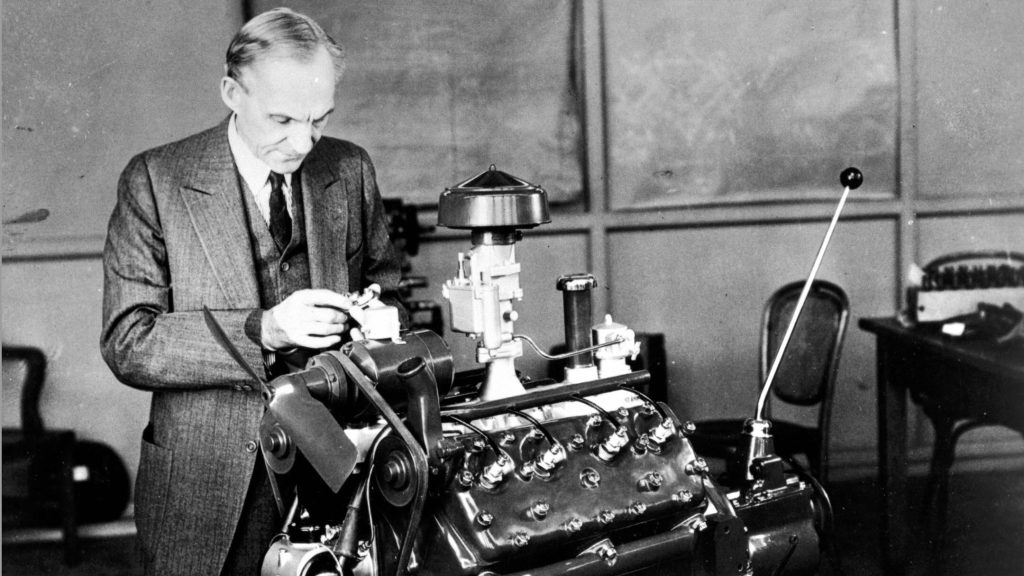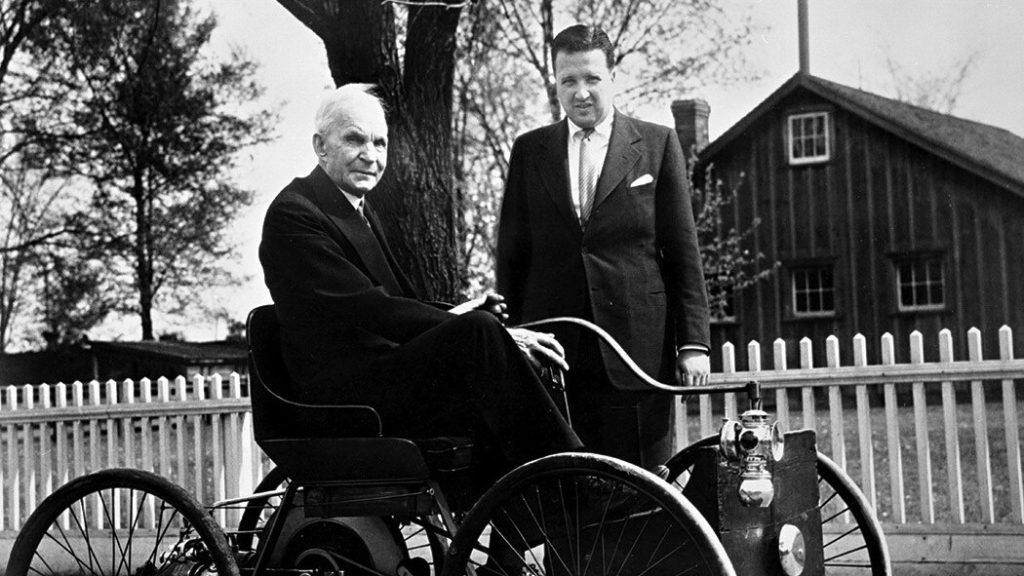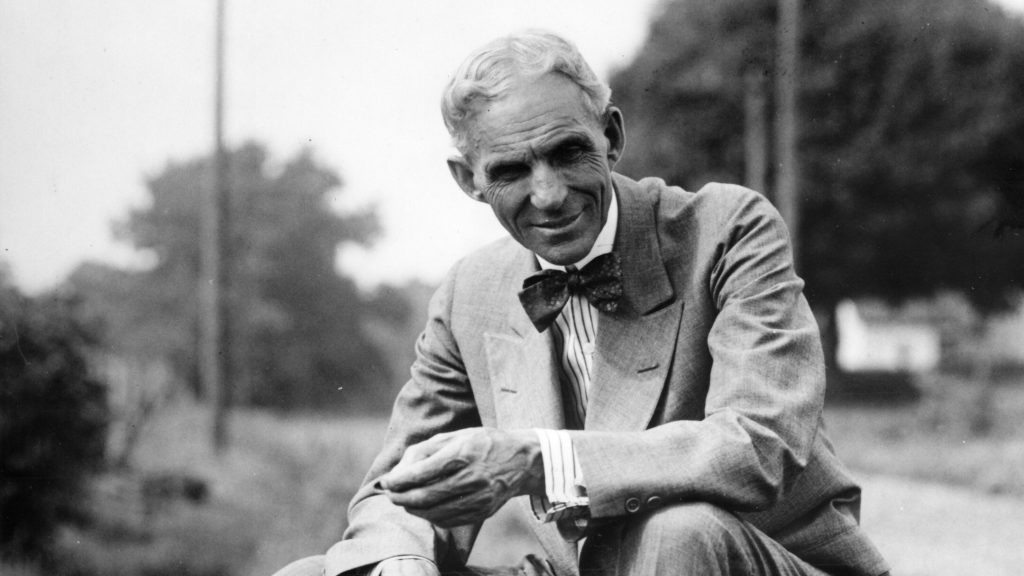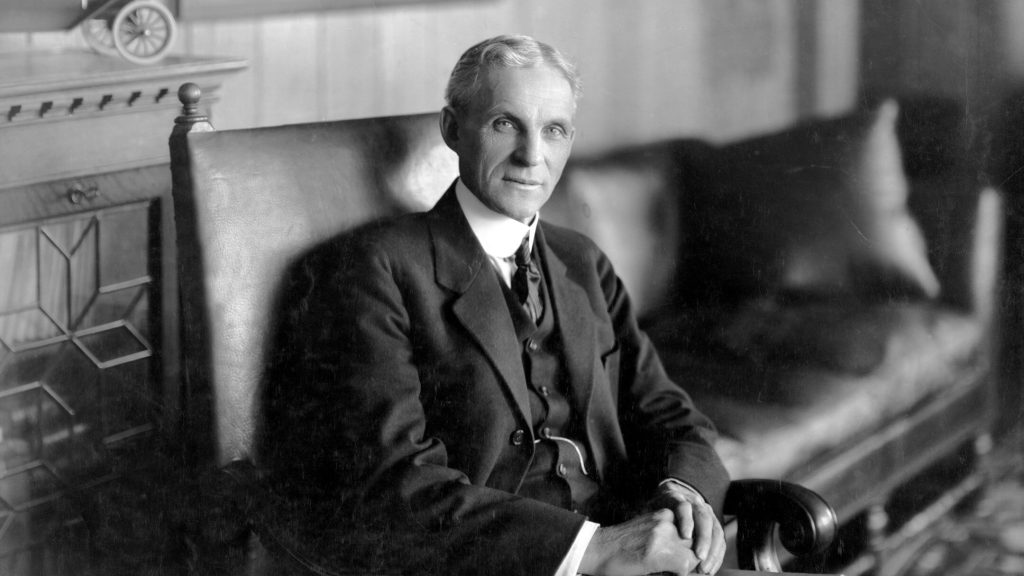- Vehicles
Vehicles
- Suvs
- Pick-Up
- Vans and Buses
- All Vehicles
- Owners
- About Ford
- Vehicles
Vehicles
- Suvs
- Pick-Up
- Vans and Buses
- All Vehicles
- Owners
- About Ford
- Vehicles
Vehicles
- Suvs
- Pick-Up
- Vans and Buses
- All Vehicles
- Owners
- About Ford
The story of Ford's journey
The story begins in Springwells Township, Wayne County, Michigan, on July 30, 1863, when Henry was the first-born of William and Mary Ford’s six children. Growing up on a prosperous family farm, he was educated in a one-room schoolhouse, where he showed an early interest in all things mechanical. This interest would turn into a true genius and earn him the title of “one of the world’s greatest industrialists”.




Henry Ford started young
Henry Ford started early. At the age of 12, he spent most of his free time in a small machine shop, which he had equipped himself. It was here that he built his first steam engine in 1878, when he was just 15 years old. The following year, Henry left home for the nearby city of Detroit to work as an apprentice machinist.
Learning the trade
His apprenticeship lasted three years, after which he returned home to Dearborn. Over the next few years, Henry divided his time between operating and repairing steam engines, finding occasional work in a Detroit factory and overhauling his father’s farm implements. The year 1888 was marked by a major change in his life, when he married Clara Bryant and began supporting his new family by running a sawmill.
It wasn’t long before Henry made another change and, in 1891, he became an engineer at the Edison Illuminating Company in Detroit. His promotion to chief engineer two years later gave him enough time and money to devote more attention to his personal experiments with internal combustion engines.


Creation of Ford Motor Company
Henry Ford realized his dream of producing a reasonably priced, reliable and efficient automobile with the introduction of the Model T in 1908. This vehicle marked a new era in personal transportation – it was easy to operate, maintain and handle on rough roads and was an instant success.
A new generation
Things were moving quickly. In 1919, Henry and his son, Edsel, bought out all the minority shareholders for $105,568,858 and became the sole owners of the company. Edsel, who succeeded his father as President that year, continued to hold the position until his death in 1943, when Henry Ford returned to the helm of the company.


Retirement
After resigning as president of the Ford Motor Company for the second time in September 1945, Henry was succeeded by his grandson, Henry Ford II.
The following year, he was honored at the American Automotive Golden Jubilee for his important contributions to the automotive industry and, later that year, the American Petroleum Institute also awarded him its first Gold Medal for outstanding contributions to the welfare of humanity.
O fim de uma era
Henry Ford died at his home in Fairlane, Dearborn, on April 7, 1947, at 11:40 pm. He was 83 years old. At the time of his death, the local Rouge River had flooded, causing a power cut. With kerosene lamps and candles burning, the scene must have been more reminiscent of his birth 83 years earlier


The Ford Brand
The Ford oval is one of the most recognizable symbols in the corporate world and has been used for over 50 years. The first sketches of the trademark date back to the company’s beginnings, when Henry Ford’s assistant engineer developed a stylized version with the words “Ford Motor Company”.
The Blue Oval today
Since 1976, the blue and silver Ford oval has been used as an identifying emblem on all Ford vehicles, providing an easily recognizable and consistent brand for all the company’s plants, facilities and products around the world.







